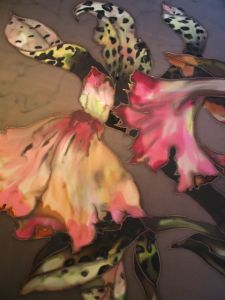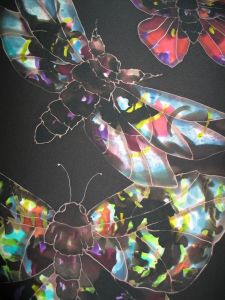Silk Painting How to
How to Categories
• Tips
Using Dye Thickener
How to Use Dye Thickner Sodium Alginate is a pure type of dried, ground kelp (seaweed) - it's commonly used to thicken food. It is the most economical thickener for Dyes of all types and it works as a thickener for other liquids as well. Use whenever you want to use dyes more like a paint. You can then brush the dyes on and they will stay put. Also use for stamping, stenciling or silk screening the dyes. You can also add a pinch to your dye mix for tie-dye to make the dye stay put rather than bleeding through the fabric and also for crisper lines. Two grades are sold:
To dissolve: Sprinkle a very small amount (1/8 to 1/4 teaspoon) of the thickener into a glass or jar of cool water or liquid dye slowly, mixing continuously to avoid clumps. A small stainless steel whisk or fork works well. Allow to sit for an hour or so, as it will continue to thicken for several hours. Cover and refrigerate to store. Don't over-thicken, thinner is better. It is sometimes difficult to wash out of steamed silk. Using Sodium Alginate as a Resist on a Scarf
(Information above drawn from instructional notes by Becky Kyhl, Iowa, 2012) |
The brown spots (slightly softened by the surrounding color as it went on) are 50/50 dye plus Pro-Chemical Print Paste (thickener), by Suzanne Punch
The yellow and the purple areas are thickened color, as described above. They remain intact while surrounded by other painted colors. When painting over areas of thickened dye, the wash will partially obscure thickened dye areas. By Suzanne Punch
|

